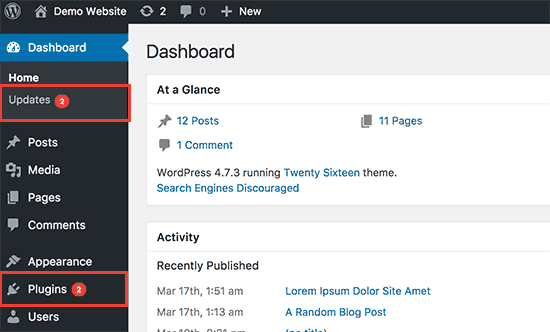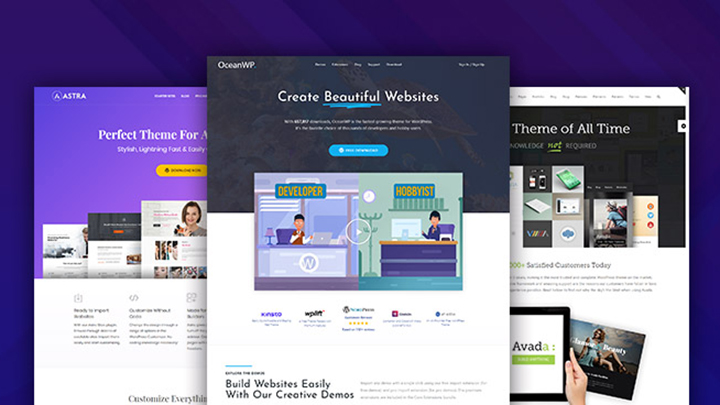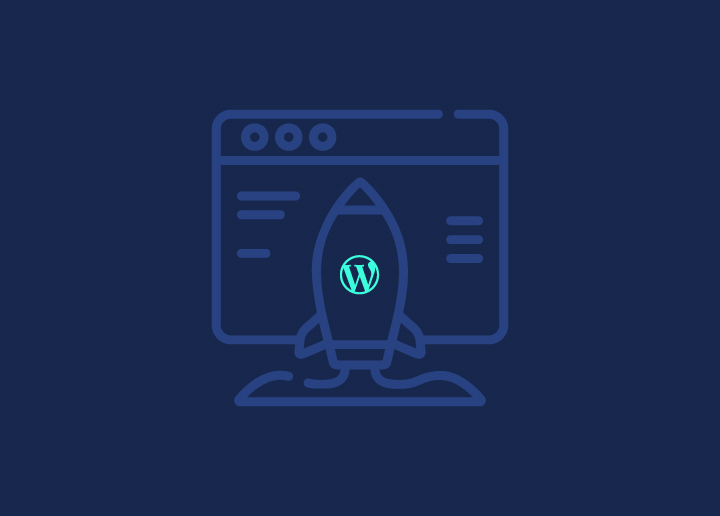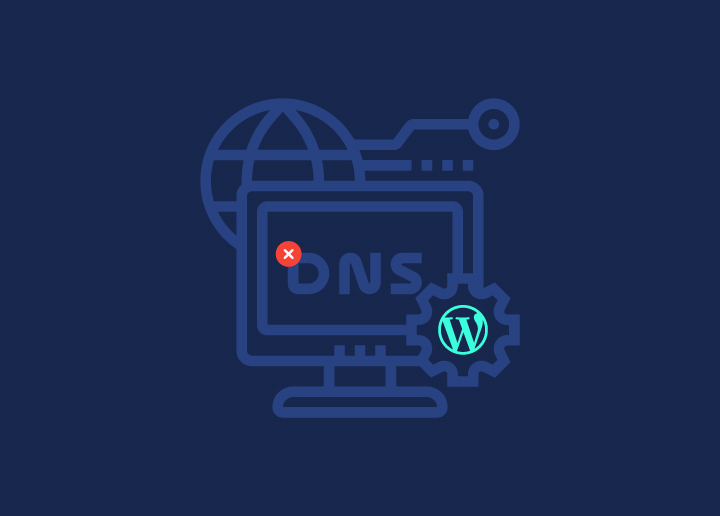Do you have a plugin or theme that you have poured your heart and soul into, and now longing for it to shine in the WordPress.org directory? Well, if you want your creations to stand out, you have got to make them climb the ladder of autocompleted search results to rank plugins and themes. That means nailing your keywords, titles, and tags.
An effective managed SEO strategy would focus on WordPress search algorithm, zeroing in on your themes and plugins’ title, tags, and descriptions, and then it sorts themes and plugins based on ratings, active installs, and more. Master these aspects and you can give your themes and plugins the boost it needs to reach more users!
Let’s roll up our sleeves and uncover the secrets to elevating ranking for your themes and plugins.
Contents
ToggleUnderstanding the WordPress Plugin Repository Algorithm
The WordPress plugin repository is a centralized platform where users can find, install, and manage a wide range of plugins to enhance the functionality of their WordPress websites. It is practically a treasure trove of add-ons and extensions, offering users access to a number of tools and features to customize and optimize their WordPress sites.
Search algorithm for WordPress plugin repository works in two phases:
- Matching Phase: It looks for matches in fields like title, tags, descriptions, and contributors.
- Ranking Phase: It ranks the plugins based on factors like ratings, active installs, update frequency, compatibility, and support resolution percentage.
Learn More: 5 Best Free WordPress Directory Plugins To Start Your Business
Steps to Improve Plugins and Themes Ranking

The WordPress plugins and themes repository harnesses Elasticsearch for advanced search algorithms and indexing techniques, enabling users to find the most relevant plugins/themes based on their specific requirements and preferences. To boost your plugins’ visibility and ranking here, perform:
- Optimize Keywords: Choose relevant and popular and difficult keywords for your plugin/theme.
- Craft Compelling Titles: Create attention-grabbing titles for your plugins.
- Tag Management: Use appropriate and specific tags for better categorization.
- Update Regularly: Keep your plugins/themes updated for compatibility and to show continued support.
- Resolve Support Queries: Address and resolve user queries promptly to improve WordPress support.
Need Affordable SEO to Drive Traffic and Revenue?
We can help you rank higher! Strengthen your site’s SEO foundation just for $499, charged just once!
Steps to Ranking Your Plugin in WordPress Directory
Now, let’s dive into the essential steps you need to take to get your plugins to rank on the WordPress directory.
Conduct Keyword Research and Align Your Keywords Effectively
Keyword research is the foundation of optimizing your plugin for discoverability. By identifying and incorporating relevant keywords and phrases, you increase the chances of your plugin appearing in search results when users search for specific functionalities or solutions.

Keyword Research Tips:
- Analyze search trends and user behavior to identify high-volume, relevant keywords
- Use keyword research tools like Google Keyword Planner, Ahrefs, Semrush, etc.
- Explore your competitors’ keywords and look for gaps or untapped opportunities
Keyword Placement Strategies:
- Incorporate keywords naturally into your plugin’s name, slug, and meta tag
- Weave keywords seamlessly into your short and long descriptions
Choose an Appropriate Title for Your Plugin

Your plugin’s title is often the first thing users notice, so it should accurately represent your plugin’s purpose while incorporating relevant keywords. A well-crafted title can pique user interest and improve click-through rates.
Examples of effective, keyword-rich titles:

Handle Your Plugin’s Tags Strategically
Tags play a crucial role in helping users discover your plugin based on specific features or use cases. By carefully selecting and assigning relevant tags, you increase your plugin’s visibility and discoverability.

Tag Selection Strategies:
- Combine broad, high-volume tags with specific, niche tags
- Research and analyze competitor tags for inspiration and opportunities
- Monitor user behavior by analyzing search intent and trending topics to identify relevant tags
Must Read: Critical SEO Trends To Follow
Craft and Maintain Both Short and Long Descriptions
Your plugin’s descriptions are your chance to showcase its features, benefits, and unique value proposition. A well-written description can persuade users to choose your plugin over others.

Short Description Best Practices:
- Concise and compelling, highlighting your plugin’s main features and value proposition
- Incorporate relevant keywords naturally and strategically
- Entice users to read the long description for more details
Long Description Guidelines:
- Provide a comprehensive overview of your plugin’s features, benefits, and use cases
- Organize information for easy scanning, using clear headings and bullet points through well-articulated blog writing
- Weave relevant keywords throughout the description, but avoid keyword stuffing
Optimize and Update Your Plugin Regularly
Maintaining a high-quality, optimized plugin is essential for ranking well and retaining users. Regular updates demonstrate your commitment to providing a secure, compatible, and feature-rich plugin.

Optimization Checklist:
- Ensure your plugin is lightweight, fast, and optimized for performance
- Implement secure coding practices and address any security vulnerabilities
- Test compatibility with the latest WordPress versions and popular themes/plugins
Update Frequency and Best Practices:
- Release regular updates to address bug fixes, security patches, and new features
- Communicate update details and changelog to users transparently
- Encourage users to update to the latest version for optimal performance and security
Read More: How Do You Safely Update WordPress Without Breaking Your Site?
Address Your Support Tickets Promptly
Providing excellent user support can significantly impact your plugin’s reputation, reviews, and ultimately, its ranking. Prompt and professional responses to user queries and issues can foster trust and loyalty.

Support Best Practices:
- Monitor and respond to support tickets in a timely manner
- Maintain a friendly, professional, and helpful tone in your responses
- Encourage users to provide detailed information for easier troubleshooting
- Follow up with users to ensure their issues are resolved satisfactorily
Must Read: A Comprehensive Guide To On-Page Vs Off-Page SEO
Monitor the Number of Downloads and Active Installations
Tracking your plugin’s download and active installation numbers can provide valuable insights into its popularity and adoption rate. High numbers in these metrics can positively influence your plugin’s ranking and visibility.

Metrics to Monitor:
- Total downloads from the WordPress.org repository
- Active installations across different WordPress versions and environments
- Download and installation trends over time
Leverage Metrics for Improvement:
- Analyze metrics to identify areas for improvement or new feature requests
- Promote your plugin through various channels to boost downloads and installations
- Encourage users to leave positive reviews and ratings, which can attract more downloads
Find More Insights: How to Promote Your WordPress Plugin or Theme to Increase Sales
Steps to Ranking Your Themes in WordPress Directory
To make your WordPress theme successful and rank higher in search engines and directories, follow these steps:
Optimizing Your Theme for Higher Ranking

Optimizing your WordPress theme for higher ranking involves following industry best practices, adhering to WordPress guidelines, and prioritizing user experience. By implementing these strategies, you can increase the visibility and appeal of your theme, ultimately driving more downloads and sales.
Follow WordPress Guidelines
WordPress provides a full set of guidelines and standards to ensure themes are built with quality, security, and usability in mind. Adhering to these guidelines is crucial for creating a theme that not only performs well but also meets the expectations of the WordPress community.
Here is what you have to check –
- Coding standards: Adhere to the WordPress coding standards to ensure your theme’s code is clean, well-structured, and follows best practices. This improves performance, security, and maintainability.
- Design and usability guidelines: Follow WordPress’s design and usability guidelines to create a user-friendly and visually appealing theme. This includes considerations such as consistent branding, intuitive navigation, and responsive design.
- Documentation and support: Provide detailed documentation and excellent support for your theme. This not only helps users but also demonstrates your commitment to quality, which can positively impact your theme’s ranking.
Keep Reading: How AI Revolutionizes WordPress Development
Focus on User Experience

By prioritizing factors such as speed, performance, mobile responsiveness, and accessibility, you can create a theme that provides a seamless and enjoyable experience for users, ultimately increasing its appeal and potential for higher rankings.
Ensure these:
- Speed and performance: Optimize your theme for speed and performance by minimizing HTTP requests, leveraging caching, and implementing lazy loading for images and other resources. A fast-loading theme provides a better user experience, which can lead to higher rankings.
- Mobile responsiveness: Ensure your theme is fully responsive and optimized for mobile devices. With the increasing number of mobile users, providing a seamless mobile experience is crucial for ranking well.
- Accessibility: Make your theme accessible to users with disabilities by following accessibility guidelines (WCAG 2.1). This includes considerations such as proper color contrast, keyboard navigation, and support for screen readers.
Find Out More: Best White Label WordPress Admin Themes
Research Competitor Themes to Offer Unique Features
To rank your WordPress theme higher, it is crucial to stand out from the competition by offering unique features that provide additional value to users. Conducting thorough research on popular themes, and spotting exceptional moves like dark themes execution, within your niche is the first step in identifying opportunities to differentiate your product.
Analyze Strengths and Weaknesses:
- Go through the top-ranking themes in your niche and make a list of their key features, design elements, and functionality like page builders, custom widget areas, or e-commerce integrations.
- Identify the strengths that make these themes appealing to users, such as fast load times, intuitive customization options, or robust documentation, and the weaknesses where they fall short, like lack of accessibility or limited third-party integrations.
- Look for recurring patterns or common features that most themes in your niche offer, such as responsive design or pre-built layouts.
Find Out More: Divi Theme Review: Should You Try it? – Seahawk – Seahawk Media
Identify Gaps and Untapped Opportunities:
- Based on your analysis, pinpoint the gaps or unmet needs that existing themes have yet to address effectively, like lack of multilingual support or advanced search functionality.
- Explore emerging trends like voice user interfaces, artificial intelligence (AI) integrations (e.g., AI-powered design tools), or advanced customization frameworks that could be incorporated into your theme to offer a unique value proposition.
- Consider features or functionality that could streamline common tasks, improve workflow, or enhance the overall user experience in ways that competitors have overlooked, such as one-click demo import, built-in lead generation tools, or seamless plugin integrations.
Keep Reading: Premium & Feature-rich WordPress Themes for Your Agency
Develop Innovative and Unique Features:

- Brainstorm ideas for innovative features that address the identified gaps and untapped opportunities, like AI-assisted content creation, no-code website builders, or immersive virtual reality (VR) experiences for product showcases.
- Focus on developing features that solve specific pain points, increase efficiency, or provide new capabilities that users cannot find elsewhere, such as advanced e-commerce features (product filters, wishlist functionality), online learning tools (course builders, lesson planners), or cutting-edge lottie animation and interactive effects.
- Leverage your team’s expertise, user feedback, and market research to refine and prioritize the most valuable and differentiating features, ensuring they align with user needs and preferences.
Read More: Best New AI Tools Web Design: Uncover the Latest Trends
Develop a Strong Marketing Strategy
Create a comprehensive marketing strategy that includes managed search engine optimization (SEO), social media promotion, and outreach to influential bloggers and websites in your niche. Build a strong online presence and leverage various marketing channels to increase visibility and attract potential customers.
Here is how –
- Implement SEO best practices (keyword research, on-page optimization, link building) for improved search visibility.
- Leverage social media platforms (Twitter, Facebook, Instagram) for promotion, engaging with the WordPress community, and sharing updates/resources.
- Reach out to influential bloggers, YouTubers, and websites in your niche for reviews, features, or sponsored content.
- Participate in relevant online communities, forums, and events to connect with potential users and establish authority.
- Implement email marketing campaigns to nurture leads and promote new theme releases or updates.
- Offer exclusive discounts or freebies to incentivize user signups and generate buzz.
Keep Reading: 5 Ways To Increase Your Bottom Of The Funnel Conversions
Create a Compelling Theme Page

Your theme’s dedicated page is the primary showcase for attracting potential users. Creating a compelling theme page that effectively highlights your theme’s features, unique value, and design work great for driving downloads and higher rankings.
Incorporate the following elements to craft an engaging and informative page that resonates with your target audience:
- Eye-catching visuals: High-quality screenshots, video demos, interactive previews to showcase design/features.
- Clear description: Concise yet detailed overview of unique selling points, features, and benefits.
- User reviews and testimonials: Authentic feedback from satisfied users, showcasing real-world impact and credibility.
- Prominent call-to-actions (CTAs): Clear and visible buttons/links for downloads, purchases, or demos.
- Detailed documentation: Comprehensive guides, tutorials, and FAQs for easy setup and customization.
- Regular updates and support: Highlight your commitment to ongoing development, debugging, and responsive support.
More to Read: How To Execute Content Marketing With Link Building?
Additional Tips for Ranking WordPress Themes & Plugins
Here are a few extra tips to push your themes and plugins to the top:
Marketing Content Through readme.txt File
The readme.txt file serves as the primary gateway for users to discover and learn about your themes and plugins. It is the first point of contact that can either pique their interest or leave them unimpressed. By crafting a compelling and well-optimized readme.txt, you can significantly increase content marketing outcome of your plugin being discovered and chosen by users.

Content Optimization Strategies:
- Incorporate relevant keywords seamlessly throughout the file, including the title, description, and feature sections
- Utilize headings and subheadings to improve readability and structure
- Provide clear and concise descriptions of your themes and plugin’s features and benefits
- Include screenshots or visuals to showcase your themes and plugin’s functionality and interface
- Highlight user testimonials or positive reviews to build trust and credibility
Additionally, the readme.txt file holds a unique advantage in the context of the WordPress.org plugin repository. Unlike Google’s search algorithm, which remains a closely guarded secret, the repository’s search logic is built upon the open-source WordPress platform itself, operating under the GPL license.
This transparency offers developers a rare opportunity to align their strategies with the key elements that influence rankings on the WordPress.org SERP (Search Engine Result Page). By understanding and optimizing for these elements, you can effectively boost your themes and plugin’s visibility and ranking within the directory.
Further Reading: Can WordPress Theme Changes Impact Google Ranking?
User Engagement Tactics:
- Encourage users to leave ratings and reviews, as positive feedback can significantly improve your themes and plugin’s ranking
- Respond promptly to user comments and support inquiries, demonstrating your commitment to user satisfaction
- Regularly update your themes and plugins with bug fixes, security patches, and new features, keeping the content fresh and relevant
- Collaborate with other developers or influencers in the WordPress resources community to cross-promote your plugins and themes
Learn More: 15+ Best Marketing Automation Tools for WordPress
Leverage Social Media Platforms
Social media platforms offer a powerful avenue to amplify your themes and plugin’s visibility and connect with your target audience. By using social media strategies, you can effectively promote your plugin, engage with potential users, and tap into the vibrant WordPress community.

Social Media Strategies:
- Engage with the WordPress community by commenting, sharing, and participating in relevant discussions on different themes and plugins
- Collaborate with influencers and thought leaders in the WordPress space to cross-promote your plugins and themes
- Leverage social media advertising tools to target specific demographics and interests
Explore Affiliate and Referral Programs
Affiliate and referral programs for WordPress can be powerful amplifiers for your themes and plugin’s reach and user acquisition. By incentivizing third-party partners to promote your theme or plugin, you can tap into new audiences and leverage the influence of established WordPress agencies, developers, or influencers.

Affiliate Program Strategies:
- Implement an affiliate program for your theme or plugin, offering commissions or revenue-sharing incentives
- Partner with agencies, developers, or influencers for WordPress affiliate marketing who can promote your theme or plugin to their audiences
- Provide affiliates with marketing materials, banners, and links to easily promote your plugin or theme
- Offer attractive commission rates or bonuses for top-performing affiliates
- Monitor and track affiliate performance to optimize your program and reward top contributors
Read a Review: AffiliateWP Review: Know Features, Pricing & More
Referral Program Hacks:
- Develop a user referral program that rewards existing users for recommending your theme or plugin to others
- Offer incentives like discounts, free extensions, or premium features for successful referrals
- Simplify the referral process by providing shareable links or referral codes
- Leverage gamification techniques, such as leaderboards or rewards tiers, to encourage more referrals
Further Reading: How to Grow Your WordPress Agency? Excellent Tips
Optimize for Voice Search
As voice search technology continues to evolve and gain popularity, optimizing your plugin’s content and metadata for voice search queries can be a strategic move. By aligning your plugin with how users naturally speak their search queries, you can improve your visibility in voice search results and tap into an emerging market.

Voice Search Optimization Strategies:
- Use natural language and conversational phrases throughout your plugin’s descriptions and metadata
- Incorporate long-tail keywords and phrases that users might speak when searching for plugins like yours
- Optimize for question-based queries by anticipating and addressing common user questions
- Leverage schema markup to enhance your theme or plugin’s visibility in voice search results
- Monitor voice search trends and update your content accordingly to stay ahead of the curve
Learn More: Voice Search Optimization: Strategies That Can Help In The Long Run
Final Words
At the end of the day, the path to ranking your theme or plugin at the top of the WordPress directory is a symphony of strategic efforts. Your action plan must prioritize user engagement by actively responding to support inquiries, addressing feedback, and regularly releasing updates. This demonstrates your commitment to user satisfaction, fostering trust and positive reviews, which can significantly boost your theme or plugin’s visibility and ranking.



















